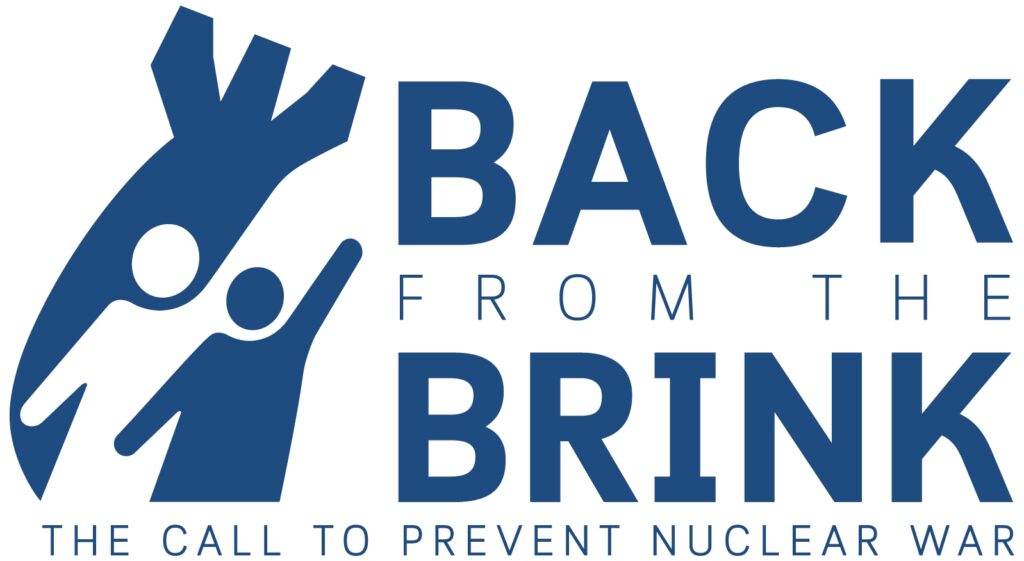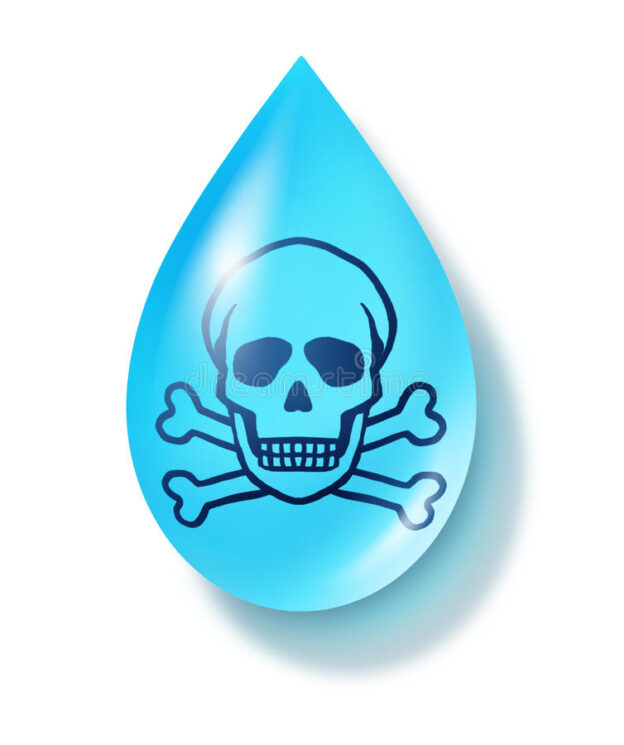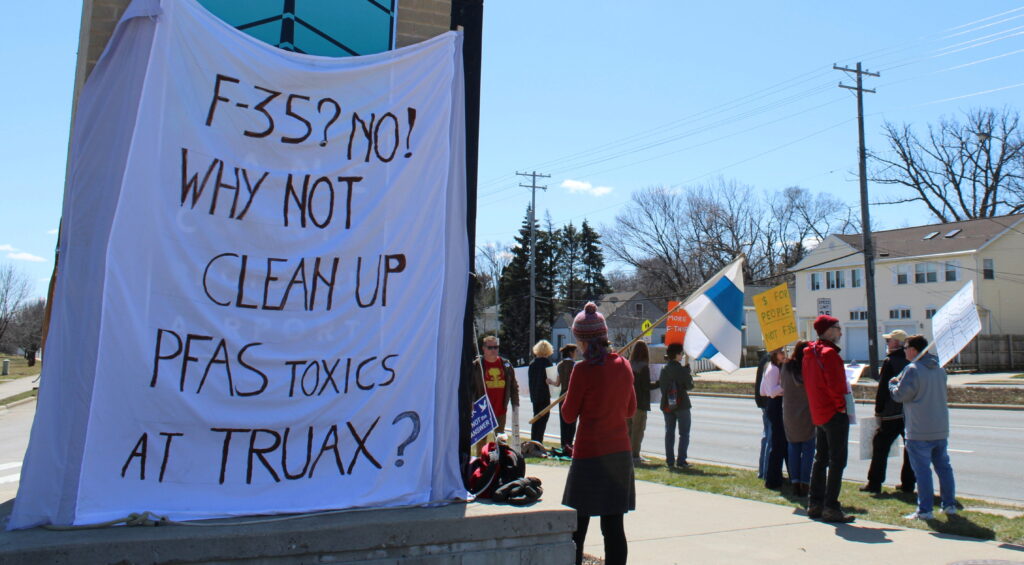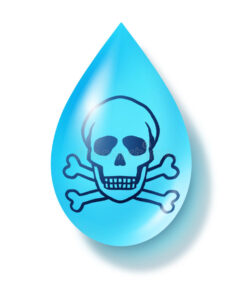https://mejo.us/how-the-madison-water-utility-disappeared-the-pfas-in-our-drinking-water/
“In 2019 and early 2020, the PFAS levels detected in many of Madison’s municipal drinking water wells were big news–they raised public concerns, and legitimately so (see Wisconsin State Journal articles here and here).
In March 2019, the well with the highest combined PFOS and PFOA levels, Well 15 on Madison’s north side, was shut down–though the Water Utility continued to insist that the water was safe. [1][2]
In her January 2020 Isthmus cover story about Madison’s PFAS problem, Kori Feener cited highly-credentialed national scientists who argued that all PFAS should be considered together in assessing health effects, not just PFOS and PFOA, and that existing standards were not low enough to protect public health. At the time, the Wisconsin DHS had proposed a 20 part-per-trillion (ppt) groundwater standard for PFOA and PFOS combined. (This is still the proposed standard).
Feener quoted Dr. Laura Orlando, an environmental health professor at Boston University. “What we’re going to find out, it’s going to be like lead. The desired level is zero,” Orlando said. Dr. Elise Sunderland, professor of environmental science and engineering at Harvard University, pointed Feener to the work of her colleague, Dr. Philippe Grandjean, who found that a safe level of PFAS in drinking water would be 1 ppt to protect infants from effects of PFAS on their immune systems.
MEJO cited some of this science in its February 2019 comments to the Water Utility Board, asking that it direct the Utility to test more PFAS compounds than they had been testing to date–and at all wells, rather than just a handful.
Last week, the U.S. EPA issued “interim lifetime health advisory levels” of 0.004 ppt for PFOA and 0.02 ppt for PFOS.
The EPA fact sheet said “The interim updated health advisories for PFOA and PFOS are based on human studies in populations exposed to these chemicals. Human studies have found associations between PFOA and/or PFOS exposure and effects on the immune system, the cardiovascular system, human development (e.g., decreased birth weight), and cancer.”
But not to worry…
During the pandemic, Madison’s drinking water PFAS problems were apparently magically cured!!
A table in the October 2019 Water Utility report showed these levels of PFAS in Madison’s wells. Feener’s story a few months later included the below graphic showing total PFAS levels in all of the wells:

In August 2020, the State Journal reported that PFAS was detected in every well.
But by late 2021, according to the Water Utility, the problem had somehow gone away. In part, this is because it was focusing on only PFOS and PFOA and comparing them to state standards. Also, though it didn’t admit this, it was also using different methods and different labs than it used in previous years.
In his December 10, 2021 Wisconsin State Journal story about the proposed DNR drinking water standard of 20 ppt for PFOA and PFOS, Chris Hubbuch wrote that Marcus Pearson, the MWU’s new public relations official, said “the proposed state standard — which is 10 times higher than PFOA and PFOS levels in any active city well — should reassure the more than 260,000 Madison-area residents ‘that our water is undeniably safe to drink.’”
And now again in summer 2022, the very confusing statements on the Madison Water Utility’s website (as of June 22) seem purposely designed to send the unsuspecting public the take away message that the many PFAS compounds detected in the past in most and/or all Madison wells have somehow disappeared. As for PFOS and PFOA, the website says they were “not detected” at any of the tested wells except Well 16, where some PFOS was detected. So all we have to worry about now is Well 16 (on the west side).
Whew, what a huge relief!
Hmmm. Wait a minute. Is this true? How would these “forever chemicals”–so dubbed because of their extreme persistence and resistance to breaking down–disappear in most of our wells? No remediation has been done on any of the PFAS hotspots–the Dane County airport and military base, the many landfills sprinkled around the city, and more.
Well, they didn’t disappear. The 2022 water samples, from from a subset of Madison wells (not all of them), were analyzed (as part of a DNR voluntary testing program) using a method called Method 537.1 that the Water Utility knows very well underestimates and under-reports the levels that are actually there.
MWU water quality manager: Method 537.1 “may underreport the “true” amount of PFAS present in a water sample” and is “inadequate for quantifying the full range of PFAS present in Madison wells“
In October 2019, the Water Utility’s water quality manager Joe Grande, presented a report to the Water Utility Board showing the PFAS levels found in previous years using “Method 537.1” as compared to a method called “modified” Method 537.1. (This is more of a lab approach than a standard method; different labs have developed varying kinds of “modifications.” The MWU tested these methods from two different private labs.)
Based on these comparisons, Mr. Grande wrote (all highlighting is mine):
“Testing to date shows that EPA Method 537.1, when compared to the modified methods, consistently results in lower total PFAS concentrations due primarily to the fact that the method tests for a smaller number of PFAS – see Figure 2. Furthermore, our limited analysis also suggests that EPA Method 537.1 may produce results lower than what is obtained by the modified methods when only the same 18 PFAS are considered. In other words, EPA Method 537.1 may underreport the “true” amount of PFAS present in a water sample.”

Grande concluded: “Although EPA Method 537.1 is the only standard method for the analysis of PFAS in drinking water, it may not be the best analytical method for quantifying PFAS in water.”
He continued: “The Water Utility has gained important experience with PFAS analytical methods and, in particular, challenges associated with accurately measuring low levels of ultra-trace contaminants such as PFAS in drinking water. While EPA Method 537.1 is the standard method for measuring PFAS in drinking water, the method proved inadequate for quantifying the full range of PFAS present in Madison wells.”
His recommendations to the Board were that the Water Utility: “Consistently use the same modified EPA Method 537 for all PFAS analysis to facilitate detection of a wider range of PFAS than EPA Method 537.1” and “Use EPA Method 537.1 if directed by US EPA or Wisconsin DNR unless the modified method has been designated an “equivalent or better” method for PFAS analysis in drinking water.”
What happened?
In 2020, the Utility used three different methods, and results again showed that Method 537.1, with higher detection limits (meaning that it can’t detect lower amounts), revealed fewer detections than the modified Method 537.1. In 2021, only the “ISO” method was used. [2]
Why did the Water Utility not follow Grande’s 2019 recommendations? Was the Water Utility directed to use Method 537.1 or the ISO method by EPA and/or DNR–or Water Utility leadership–beginning in 2021? Have the modified 537.1 methods not been designated as “equivalent or better”? Can the Water Utility still use the most sensitive “modified” method it used in the past to test PFAS in our wells, or is that no longer legitimate?
Maybe these debates about methods wouldn’t matter if these very low levels didn’t have health impacts. But given the EPA’s recently announced “interim lifetime health advisory levels” of 0.004 ppt for PFOA and 0.02 ppt for PFOS, we should be using available and approved methods that can detect the lowest possible levels in order to understand what people are drinking as accurately as we can.
I contacted the Water Utility to find out if the “modified” 537.1 methods are still legitimate and allowable per DNR regulations. The answer–YES. The modified 537.1 approach, Grande said, “is included as an approved alternative in NR 809 revisions.”
So the Water Utility could analyze all water samples using this more sensitive method, if it had the political will to do so.
Instead, the Water Utility is misleading the public
Last week, the Water Utility shared the DNR-project’s 2022 PFAS results, based on Method 537.1, on its PFAS webpage. Here’s what that looks like (as of today, June 22, 2022):
Summary of Test Results
- None of the 18 PFAS tested were found at ten of the eighteen wells tested
- PFOS (RL: <1 ppt) was detected at a single well (#16) and PFOA (RL: <2 ppt) was not detected at any of the 18 wells tested
Sorting through this confusing wording, the desired take home message seems to be that only one well (Well 16) has a low level of PFOS and all the other wells have no PFAS. Yes, it mentions reporting levels for PFOS and PFOA, but most people reading this–having no clue what detection and reporting levels mean (or even that they exist)–will likely take this at face value
If anyone paid attention to PFAS news in the past, and remember it, a few might be perplexed about how this happened, but most people, with other more visible and pressing problems in their lives to worry about, will likely be pleasantly surprised and relieved that somehow the PFAS in the water they are drinking every day went away.
What about the other Madison wells, and the many other PFAS compounds found in previous years? They weren’t included in the 2022 testing. Method 537.1 only analyzes 18 PFAS compounds.
The Water Utility knows very well–as its water quality manager wrote explicitly in a report to the Water Utility Board in 2019–that “EPA Method 537.1 may underreport the “true” amount of PFAS present in a water sample” and “Although EPA Method 537.1 is the only standard method for the analysis of PFAS in drinking water, it may not be the best analytical method for quantifying PFAS in water” and “While EPA Method 537.1 is the standard method for measuring PFAS in drinking water, the method proved inadequate for quantifying the full range of PFAS present in Madison wells.”
The Utility’s webpage with the 2022 results says that they are based on Method 537.1. But it says nothing about its inadequacies, and how they explain the disappearance of PFAS detections compared to previous years.
Few (or no one) will know that the water quality manager recommended to the Water Utility Board in 2019 that the Utility “[c]onsistently use the same modified EPA Method 537 for all PFAS analysis to facilitate detection of a wider range of PFAS than EPA Method 537.1.”
And, of course, nobody paid any attention to MEJO’s 2019 comments to the Board, agreeing with the water quality manager’s recommendation to use the more sensitive modified EPA method 537.1, rather than the “inadequate” standard EPA Method 537.1, in the future.
Then the pandemic happened, everyone was locked down, few participated in the Zoom Water Utility and TAC meetings (which hardly anyone knows about) and/or tracked what the Water Utility was up to.
Madison can do better: Will it? Unlikely
Given the EPA’s interim lifetime health advisory levels and the fact that the Water Utility can (per state regulations) use other methods besides standard Method 537.1 (including modified 537.1 methods) we think, as we recommended in 2019, the Water Utility should use the analytical methods with the lowest possible detection limits, whether that be modified Method 537.1 or another method.
But based on our experiences here, and how the Water Utility has disingenuously “disappeared” the PFAS in recent years, we expect it won’t. Madison officials certainly won’t demand it. In fact, the City of Madison would rather pretend that the PFAS in our drinking water went away. This approach is much better for the city’s “best of X Y Z” image and for attracting more residents to the rampantly growing city. Who wants to move to a city with poison in its water?
The rampant growth, as I’ve said repeatedly in recent posts, will mean our municipal wells will pump even harder and draw even more PFAS into them. But as long as we can pretend the PFAS isn’t there, who cares?
What’s the old saying? “Denial ain’t just a River in Egypt.” (Mark Twain)
********
[1] Currently the Water Utility is planning to put a filter on the well before it is put back into service. How low can the available filters reduce PFAS levels to? Which one will the MWU use? What methods will be used to test the PFAS levels? Attend the public meeting on June 30th and find out.
[2] At the April 2022 Water Utility Technical Advisory Committee meeting, Grande stated clearly that the standard Method 537.1 being used by DNR would result in results below the detection limits for all but one Madison well, Well 16. None of the TAC members expressed any concerns about that. That is indeed what results showed when testing was done in June under the DNR’s program.























